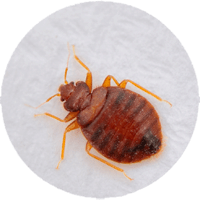Don’t throw out your furniture! Wela Pest Control specializes in killing bed bugs and termites using the latest and greatest technology available. The extermination process used is the most affordable and effective solution to kill bed bugs and termites, guaranteed. The treatment is quick, efficient, and completed in approximately 6-8 hours. Your home — and most importantly your family — will be 100% bed bug and termite free in less than one (1) day!
We want you to be happy living without bed bugs or termites!
We are the leader in bed bug heat treatment industry. Our innovative technology and convective heat methodologies have proven to be the most effective system for a complete bed bug eradication solution. We are committed to customer service and doing the job right the first time.










We are the leader in the Oahua bed bug treatment industry. Our innovative technology and convective heat methodologies have proven to be the most effective system for a complete bed bug eradication solution.

We use portable electric and direct fired heaters. These eco-friendly devices elevate the ambient temperature to a level that is lethal for bed bugs yet safe for the contents of your home. The unit disperses and convects heated air throughout your entire house so that it warms every location that pests might hide... even places chemical or pesticide treatments cannot easily reach. Heat treatments eliminate the requirement to use toxic pesticides inside your home and the potential for lingering chemical residue. Our professionally-trained and certified technicians can safely kill bed bugs in one treatment without damaging your home. Temperatures within the treatment area are never higher than what is found in a shipping container being transported across the desert in the summer.
| Wela Heat | Pesticides | ||
| Treatment duration | 1 Day | 
|
Weeks to Months |
| Kill all bedbugs in a single treatment? | Yes | 
|
No |
| Repeat visits? | Not needed | 
|
Required |
| Toxic chemcials | No | 
|
Yes |
| 100% safe to humans and pets? | Yes | 
|
No |
| Antibacterial | Yes | 
|
No |
| Reduces allergens? | Yes | 
|
No |
| Denatures dust mites? | Yes | 
|
No |
| Kills insect eggs? | Yes | 
|
No |
 Bed bugs are small, oblong, reddish-brown insects that vary in size, from the size of a small pinhead in early nymph stages, to the size of a large apple seed when mature adults.
Bed bugs are small, oblong, reddish-brown insects that vary in size, from the size of a small pinhead in early nymph stages, to the size of a large apple seed when mature adults.
Very mature bed bugs can grow to sizes that are almost as large as a fingernail. Most bed bugs are the size of an apple seed.
Bed bug eggs are white and cylindrical, and roughly two to three grains of sand in length. They’re tiny and can often be overlooked when checking a mattress for signs of a bed bug infestation. Newly hatched bed bugs are scarlet red immediately after their first feeding, and darken to a reddish-brown as they continue to mature.
Bed bugs do not jump or fly, which may help distinguish them from other parasites that feed on blood such as fleas, ticks, or mosquitoes; or bite or sting such as flies, bees, wasps, beetles, or gnats.
Very informative and very professional. No oversell, just very honest about what they needed to do. Very pleasant experience. Mahalo for the service, it was very refreshing to deal with Pat and his crew.Carl Russel
Aiea, Hawaii
5 Stars: ★ ★ ★ ★ ★
The various life stages of bed bugs vary slightly in appearance. Baby or newly-hatched bed bugs tend to be translucent immediately after birth, but are scarlet red immediately after their first feeding. Bed bugs molt their exoskeleton or shed their skin multiple times as they feed and continue to grow and transition between each life cycle. Newly-hatched bed bugs are translucent in color, but are scarlet red in color immediately after their first feeding.
The following image contains a handful of stages of bed bugs, including some of the very early nymph stages that are a scarlet red color, along with older and larger adults that have a much darker reddish-brown color.
Contrary to the stigma that is typically associated with bed bugs regarding excessive clutter or lack of cleanliness, neither of these actually cause bed bugs or contribute to an infestation. While clutter may provide additional areas for bed bugs to initially evade detection, the only real “cause” is that one or more bed bugs have hitchhiked on you or your clothes, or have stowed away in your belongings in hopes of finding a viable food source: you and your family.